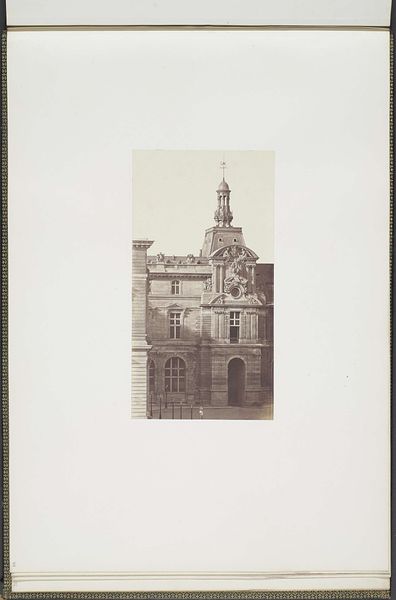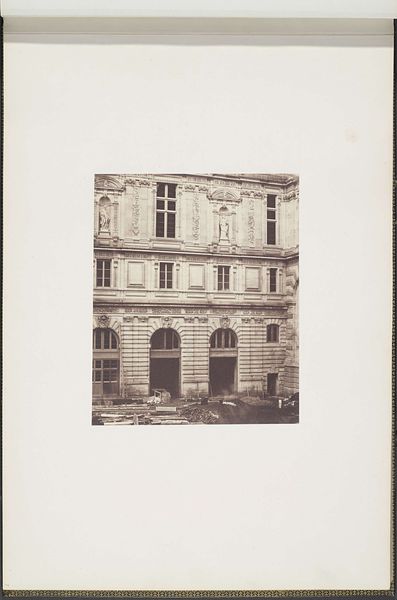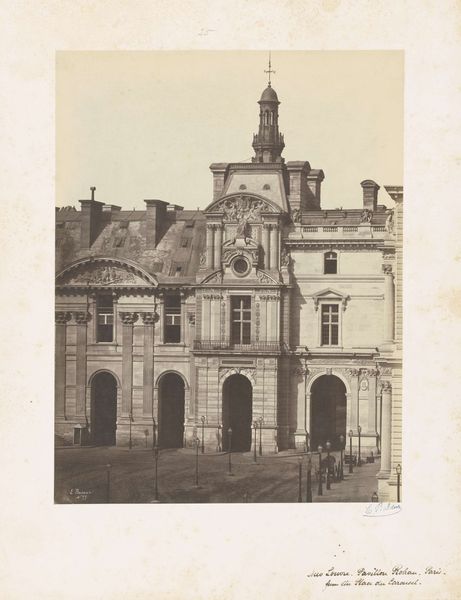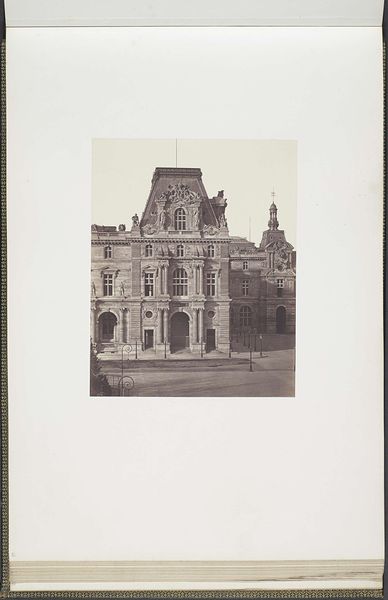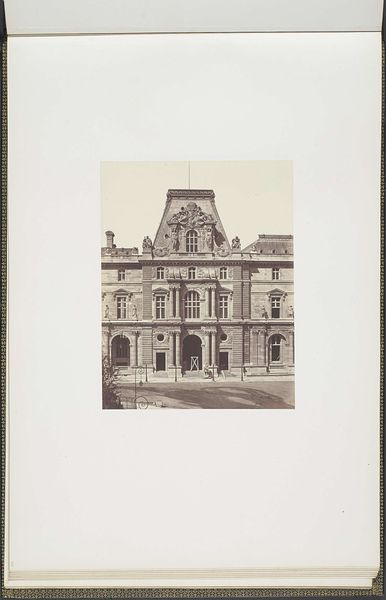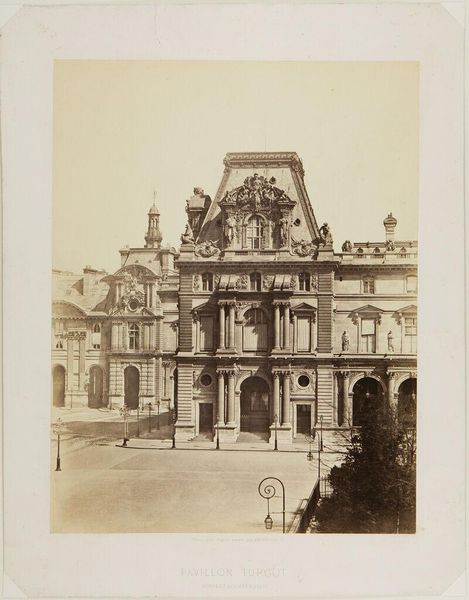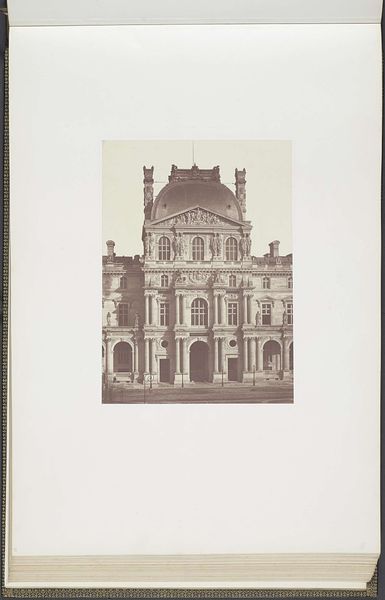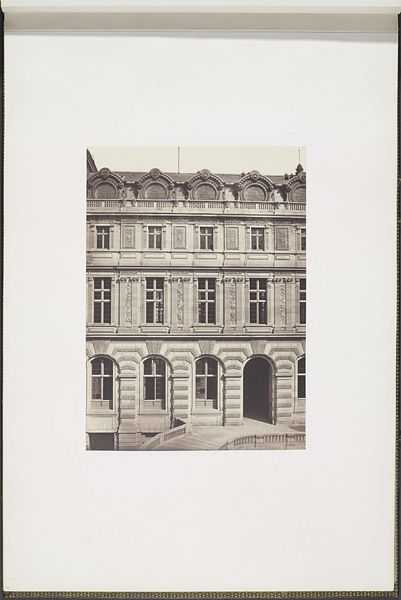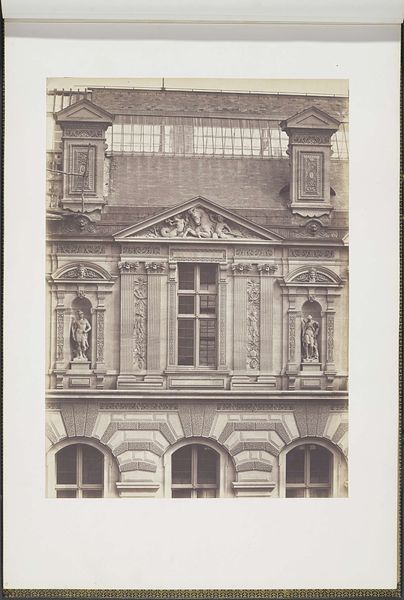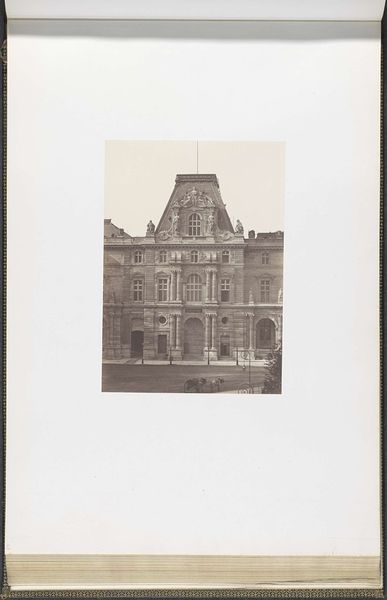
print, daguerreotype, photography, architecture
#
neoclassicism
# print
#
daguerreotype
#
muted light
#
tonal
#
photography
#
cityscape
#
tonal art
#
architecture
Dimensions: height 378 mm, width 556 mm
Copyright: Rijks Museum: Open Domain
Curator: We’re looking at Édouard Baldus's photograph "Pavillon de Rohan," taken around 1857, now held at the Rijksmuseum. This print showcases his mastery of the daguerreotype in capturing architectural details. Editor: My first impression is of somber grandeur, like a stage set awaiting a tragedy. The tonal variations feel muted and the composition, while balanced, conveys an almost unsettling stillness. Curator: Indeed. Baldus was commissioned to document architectural projects, particularly in Paris during a period of massive urban transformation under Napoleon III. The Rohan Pavilion was part of the Louvre Palace; this photo embodies the self-conscious attempt to solidify imperial power through imposing architectural projects and public works. Editor: Absolutely, it radiates neoclassicism. Look at the symmetrical arrangement, the pilasters, the arches—they create a sense of rigid order. It's as if Baldus deliberately chose this angle to accentuate these design elements. But also the use of light – notice the shadowed areas which serve to augment the architectural framework as a strong underlying structure of the building's imposing presence. Curator: Right. This building embodies aspirations for continuity with previous empires—specifically Rome. Baldus’s photographs weren't just objective documentation. These were carefully considered representations. They helped to reinforce the imperial narrative of progress, permanence and the emperor's vision of modernizing France, of projecting cultural strength. Editor: There’s also a kind of visual tension present here. While the building projects power, the daguerreotype process gives it a certain fragility. It renders every imperfection in minute detail, thus lending a sense of impermanence, undermining the building's solid presence in a way. Curator: Perhaps a visual representation of how any regime, however imposing it might appear, can be surprisingly vulnerable, even fragile. Baldus provides a remarkable insight into the past of French society. Editor: It's a hauntingly beautiful picture. The nuances of tone reveal depth and texture, yet also contribute to this aura of imposing detachment from our presence and experience. Curator: I agree, looking at the work today serves to prompt an evaluation of not just the city’s evolution, but also to look back at the ambitions that shape societies at the time, then and now.
Comments
No comments
Be the first to comment and join the conversation on the ultimate creative platform.
